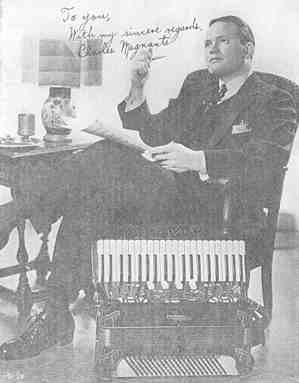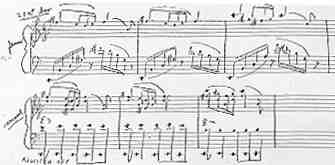Arranging


An excellent example of what "arrangement" can mean is to be found in the current vogue for old folk songs, classical music, and hymns that have been transformed into popular "swing" tunes. Recall how "Loch Lomond" used to sound as played from "Songs the Whole World Sings" and then listen to the modern dance version. The melody is the same, but what a different "Loch Lomond"! It's all in the arrangement.
Arranging music for the piano-accordion is naturally a comparatively new field, since the instrument itself is not old as compared with piano, violin, etc. As a result, the amount of modern literature that has been published is relatively small, and this field offers limitless opportunities to the ambitious musician.
As I started last month, arranging is a matter of skill and knowledge, not of inspiration as is the essential element in composing. Harmony and counterpoint are necessary in the education of an arranger. However, besides knowing how to write music, a successful arranger must have a certain instinctive feeling for the proper handling of material. To present to best advantage an intricate score in compact form, adapted for playing on a single instrument (in our case the accordion) is not easy. The art lies in the select ion of what to retain and what to omit, and the disposition of the material to the new medium. As long as harmonious ease and smoothness of delivery, faithful to the original is secured, a great amount of detail may be omitted without any real loss.
In arranging, one very satisfactory method is to work from an orchestral score, taking the most essential parts and embodying them in the accordion arrangement. Perhaps the most popular method is to work from the piano score. Due to certain similarities of piano and piano accordion, the treble needs very little changing, with the exception of adjusting its range. The real work comes in the left hand, and a keen sense of judgment is necessary in using bass notes and chords to the best advantage. At times it is desirable to forget the literal figurations and give your own version or conception of an accompaniment to the melody.
Perhaps the most practical way of describing how I go about making arrangements is to give a few practical examples:
 "NOTTURNO" by EDVARD GRIEG
"NOTTURNO" by EDVARD GRIEG
Accordion Arr. by Magnante
First, let us look at an accordion solo arrangement. Here are a few bars of Grieg's "Notturno," first as written for the piano, and then as arranged by me for accordion. You will notice that in the accordion arrangement, the left hand is entirely different in effect from the original piano score. Perhaps you may think this is taking too much "poetic license" with Grieg's ideas, but in a case like this it is the only practical thing to do. The original bass creates a rippling effect that cannot possibly be achieved on the bass of an accordion. But the beauty of the original can be perfectly preserved and adapted to the accordion if imagination and good taste are used by the arranger.
Next is an example of an accordion duet arrangement. Since this has been made from an orchestra score, space does not permit showing the original music involved. In arranging for two accordions, the first accordion, as a rule, carries the dominating part. That is the case here, and the melody is harmonized in thirds and sixths by the second accordion.
 SCORE OF "MARRIAGE OF FIGARO" by MOZART
SCORE OF "MARRIAGE OF FIGARO" by MOZART
Most complicated of all is arranging for a quartet. You will notice in an example given later, that bass is played only by the first accordion. This may bring the question to some minds, "Why bother with four accordions, using only half the potentialities of three of them, instead of simply using two with both bass and treble employed?" My answer to this is:
There are some instances where quantity is necessary to give quality. In a symphony orchestra you will see twenty or more men in the violin section. Perhaps they could get along with less if each violinist played double notes, but with this adequate number, each man can play his part more effectively.
I do not believe that Fugues can be done successfully with two or even three (Turn to Page 16)
Editor's note: the conclusion of this article does not appear on page 16 -- or any other page for that matter -- from the May 1938 issue of Accordion World.
The Classical Free-Reed, Inc. staff gratefully acknowledges volunteer Patrick Kiley who assisted in the production of this article, as well as Stanley Darrow and his comprehensive American Accordion Musicological Society library.
| Charles Magnante: Background For Success, Part 4 |
| Charles Magnante: Background For Success, Part 5 |
| Invitation to Contributors / Submission Guidelines |
| Back to The Free-Reed Journal Contents Page |
| Back to The Classical Free-Reed, Inc. Home Page |